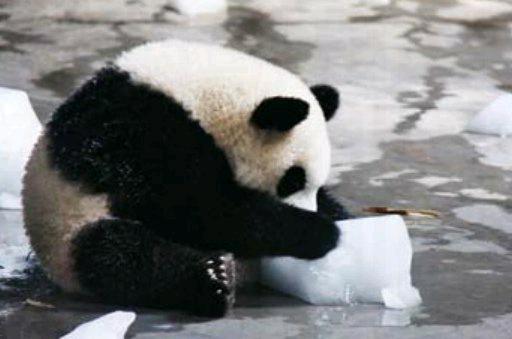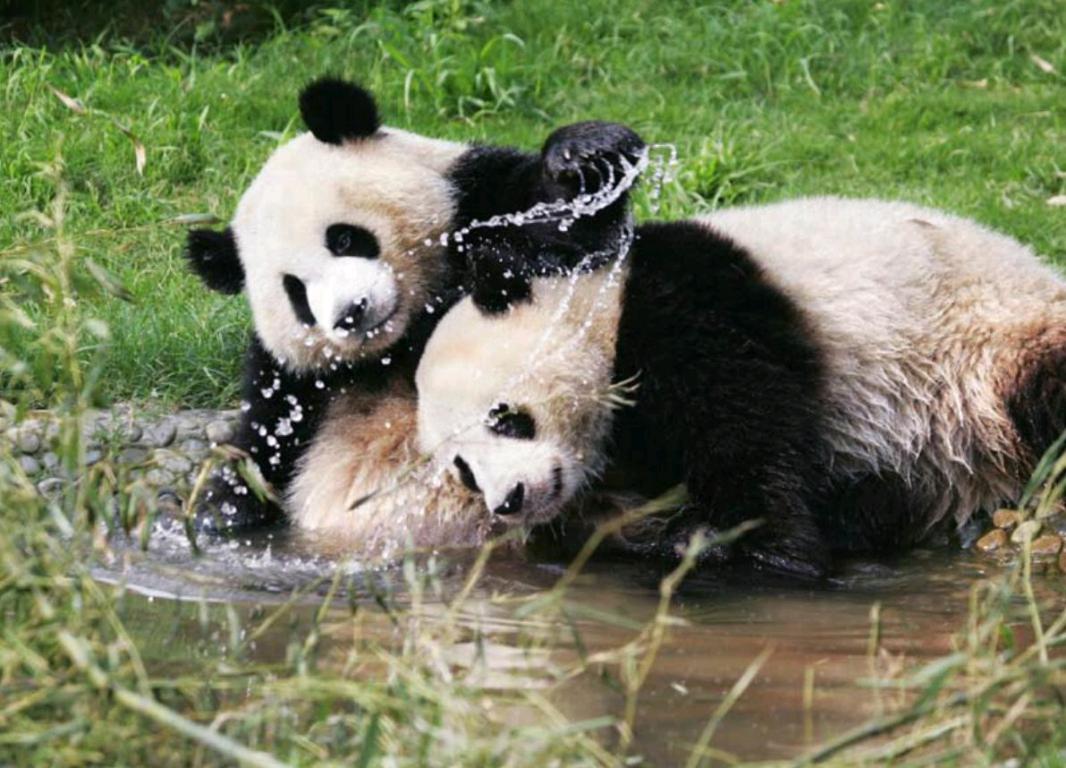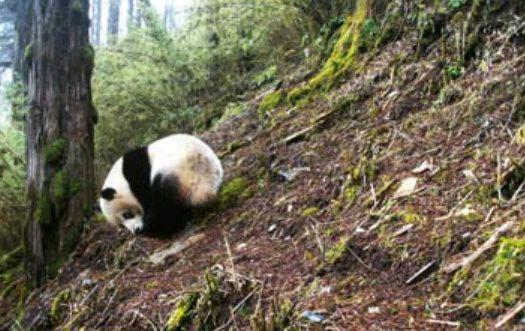Bamboo Hermits
by+Wang+Fang
The Wolong Nature Reserve in Sichuan Province is the largest giant panda habitat in China. The endangered animal can be also found in some primitive forests in Shaanxi and Gansu provinces. About 400,000-500,000 years ago, “territory” of the giant panda included areas along the Yellow, Yangtze and Pearl rivers, as well as todays Vietnam, Thailand, and northern Myanmar. In the lower Paleolithic epoch, giant pandas, saber-toothed tigers, and mammoths comprised Ailuropoda-Stegodon fauna that fed on bamboo. Due to extreme changes in the natural environment about 18,000 years ago, most such species went extinct. The giant panda survived, but its habitat has drastically shrunk.
The giant pandas diet is herbivorous, consisting almost exclusively of bamboo. As early as 1,700 years ago, Chinese people considered the giant panda a symbol of peace and called it “Zouyu” (a legendary animal representing righteousness and benevolence). If an army raised flags featuring the giant panda, the enemy would stop attacking. In 658, Empress Wu Zetian of the Tang Dynasty (618-907) presented two pandas as state gifts to the emperor of Japan.
French missionary, botanist and zoologist Armand David introduced the giant panda to the West. In 1869, when he first encountered the animal in Sichuan Province, David declared that it might be an “interesting, new species.” He sent a panda to Henri Milne Edwards, a zoologist in Musee dHistoire Naturelle in Paris, who later published a paper asserting that the animal was a close relative of the red panda discovered earlier in Tibet. The animal was thus named the giant panda. In honor of its Western discoverer, the binomial of the giant panda is Ailuropoda melanoleuca David.
The giant panda prefers to inhabit areas near water sources and featuring gentle slopes and sparse bamboo forests. A panda can eat 5-10 kilograms of bamboo per day, but only 17 percent can be absorbed due to its poor digestive efficiency. For this reason, the giant panda must eat a massive volume to get enough nutrients. Despite its big head, an adults brain averages a volume of 310-320 milliliters, 60 milliliters less than the Asian black bear whose head is smaller. The giant panda has bad eyesight, but an acute sense of smell. It marks its territory with smell. Pandas also communicate with scent during mating season and determine whether food is edible at night completely based on smell. Its short and stubby tail seems practically useless, but it actually spreads a scent emitted from a gland beneath it. The giant pandas enemies include leopards, jackals, and Asian golden cats. These predators cannot subdue a fully-grown adult panda, but they often attack those that are old, weak, or sick.
Pandas generally live solitarily as adults, with males and females congregating only during mating season. Pandas find shelter in hollow trees, rock crevices or bushes, but do not establish permanent dens. They spend most of the day eating and sleeping. They are most often seen feeding at dawn or dusk. Pandas move slowly unless they are disturbed. They can run fast when being chased. Along with the ability to swim, pandas excel at climbing trees, which is how they most often evade predators.
Pandas usually sleep in trees to keep safe from predators. It takes two or three minutes for a panda to climb a dozen meters up a tree. Before resting, a panda sways its branches to test their strength. Pandas dont hibernate in winter, and their fat reserves make the hot summertime particularly unpleasant.
The average life span of wild pandas is 26 years. Female pandas are able to breed from age four or five. For males, the breeding age is five to six. The mating season for pandas stretches from March to May. Females are picky in choosing mates. Males fight to win favor of females.
The reproductive rate of pandas is low. For genetic and modern environmental reasons, many females now suffer from reproductive development problems or endocrine disorders, leading to abnormal ovulation and even lifelong infertility. Typically, a female panda bears only five or six litters in her lifetime. The gestation period ranges from four to five months, and a female delivers one or two cubs each time. When a cub is first born, it is pink and weighs only 95 to 140 grams. The cub cannot crawl on its own until five or six months after birth. During that period, the mother rarely leaves her den to feed. Raising a cub is a difficult task, which can hurt her health. If twins are born, usually only one survives in the wild because it is so easy for an exhausted mother to accidentally trample the other. After the lactation period, the mother teaches her cub how to feed and survive in the wild. While child-rearing, the mother will not mate until her cub matures.
China Pictorial2015年4期
